
For many travelers, the name of Vietnam still strongly resonates with the Vietnam War – one reflected so hugely in pop culture that it became well known not only to the participants but to other nations and many generations.
Even though Vietnam has moved on and tourism offers countless unforgettable experiences, the Vietnam War sites are still very popular.
There are way too many places on a Vietnam War sites map to see them all. Here we have chosen to focus on the most significant ones. Whether you are a history buff or a veteran, the below list will give you a good insight into war tourism in Vietnam.
The fall of Saigon in ‘75 marked one of the most significant dates in the history of the Vietnam War. For the history enthusiasts just being there is a remarkable experience. But several places are a must-see. Some of the sites you will see during your regular tours in Saigon, others you need to plan extra.

Modern-day Rex Hotel is also a shopping center
Built in the late ‘20s as the auto dealership and garage complex, it was converted into a hotel just in time to welcome the 400 American soldiers who arrived in town in 1961. Later during the war, the hotel became a regular venue for the American military command’s daily meetings while the rooftop was the popular place for the military officials and war correspondents’ evening drinks.
Today it’s a 5* elegant hotel where you can book your stay or just stop by for refreshments at the rooftop bar, to reflect on the past events.
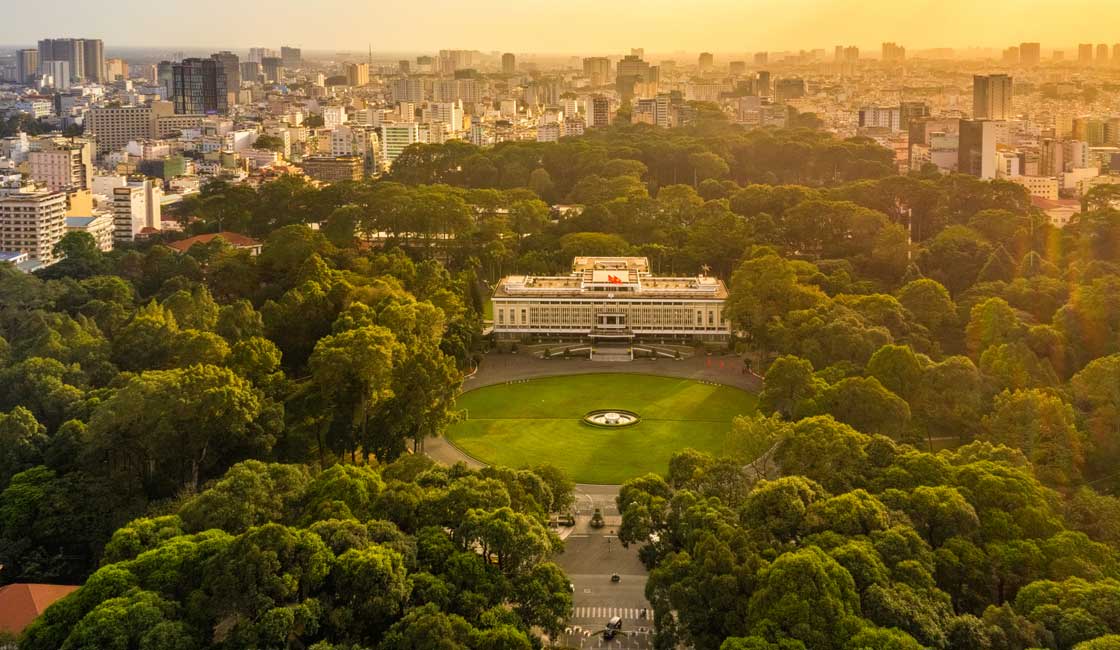
In the very center of a busy city
A landmark with a long story reaching back to the colonial era. This is where the South Vietnamese government operated from. Sightseeing the palace brings some realizations about the War’s organization with the opening of the “war rooms”, tunnels and telecommunication centre in the Palace basements. It became an icon of the end of the Vietnam War when the tank of the North Vietnamese army stormed through the gates, marking the Fall of Saigon.
The palace and the Rex hotel are right in the city center and a walkable distance from each other.
The photo by a Dutch photographer Hubert van Es, of the last CIA helicopter picking up the evacuees from Saigon on April 29th, 1975 is one of the most iconic images of the Vietnam War.
That scene took place on the rooftop of an apartment building at 22 Gia Long Street (today 22 Lý Tự Trọng Street). If you’d like to snap your own picture or just visit that place – the building is right in the city center. From across the street, you can see the rooftop with the elevator shaft that was used as a landing pad for the helicopter.
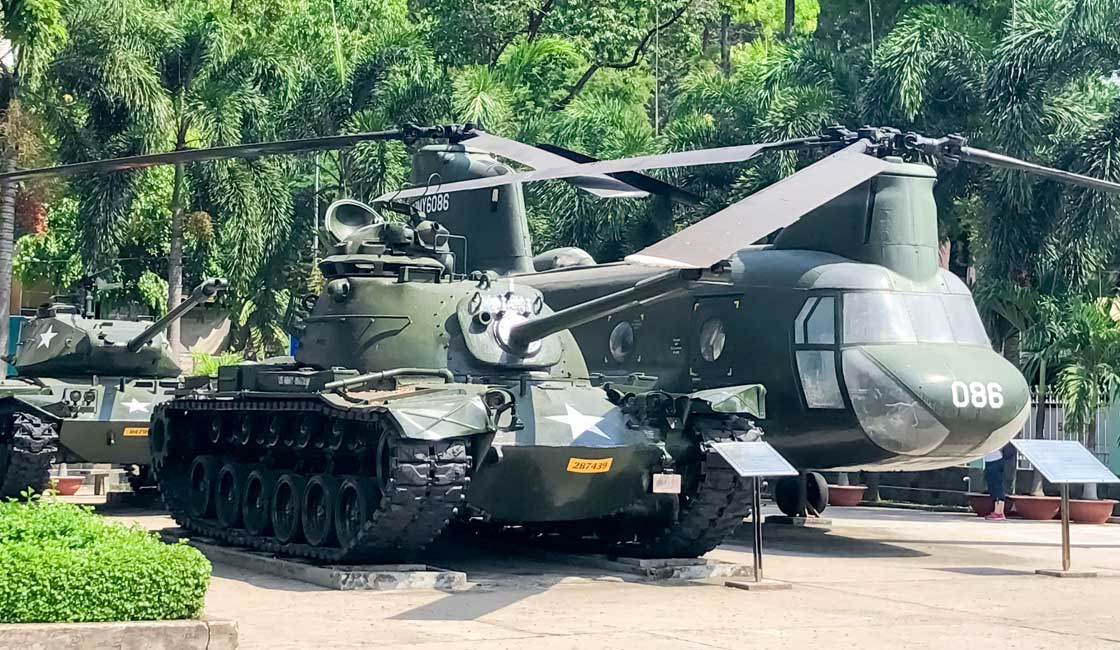
Heavy equipment and heavier stories
In a way, the name says it all. Originally created to highlight the American cruelties at war, nowadays it has eased the propaganda tone. Nonetheless, it is still not an easy visit. The display of the military equipment and the collection of photographs give an insight into the stories we wish never happened.
When in Saigon, it’s worth sparing a day or two on day trips to the nearby South Vietnam sites so important to the war events.
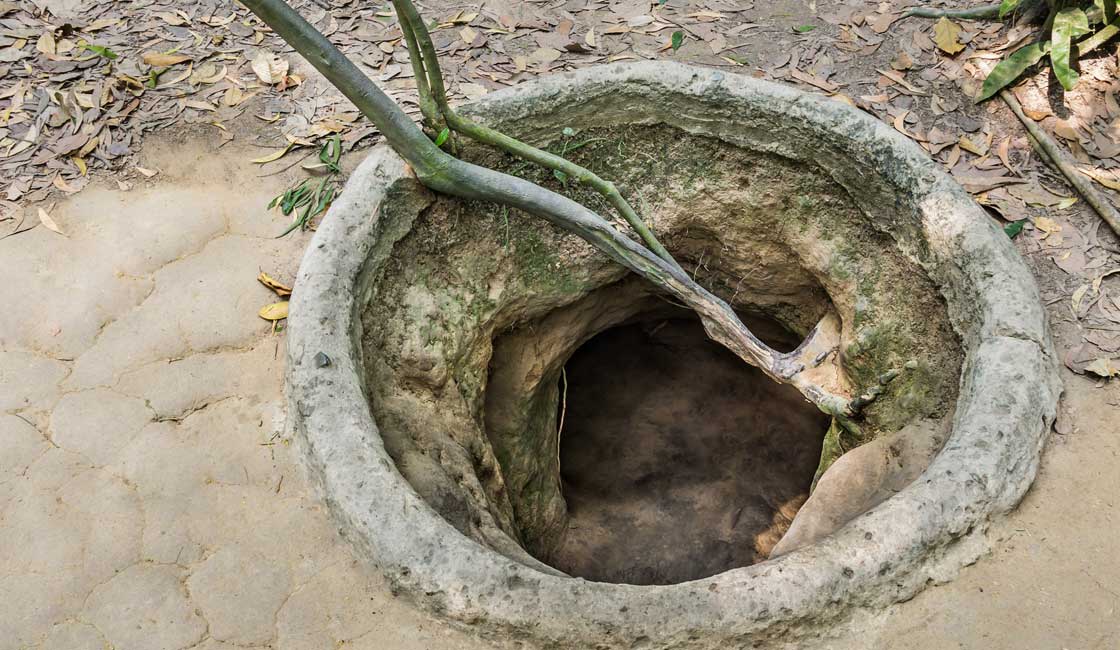
One of the entrances
Possibly the most commonly recognized war site in Vietnam. The network of tunnels was one of the amazing strengths of the Southern Vietnam forces. Ideas out of a movie war turn out to be an unimaginable reality.
Today Cu Chi is prepared for tourists, parts of the tunnels even broaden up to “accommodate” visitors of non-Vietnamese figures. An eye-opening and unforgettable experience.
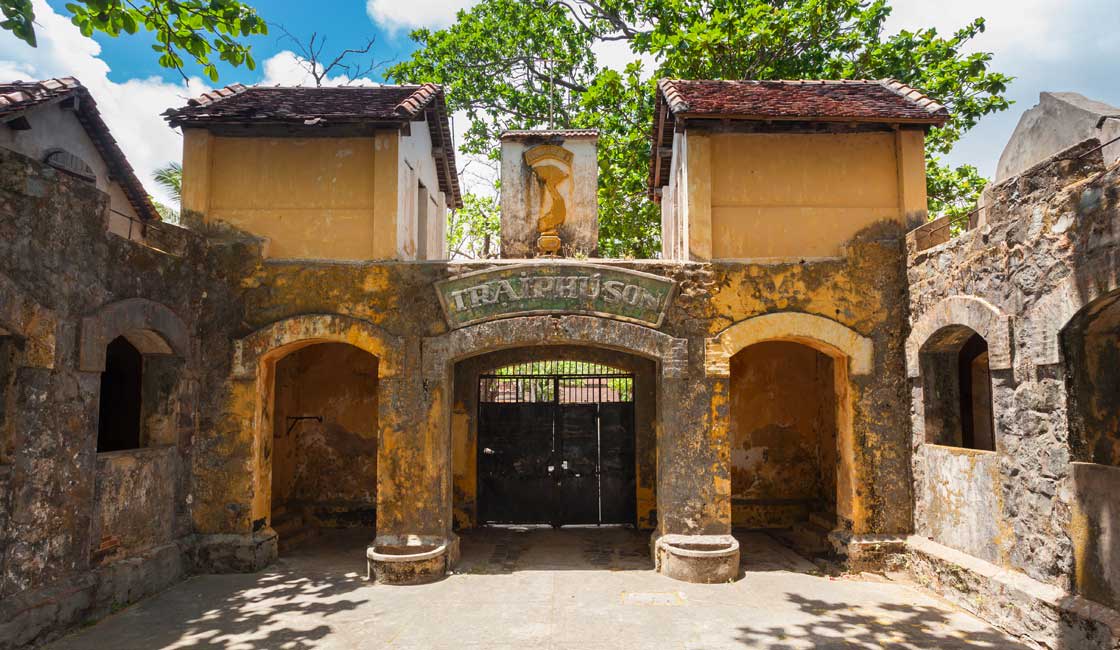
The entrance
The island of Con Son, the largest island in the Con Dao archipelago, is home to Con Dao Prison and was originally used by the French colonists for the especially dangerous enemies of colonialism. It’s a very isolated island, off the southern coast of Vietnam.
The American army took over the prison and the site was specifically used for torture and abuse of prisoners in the ‘60s and ‘70s. The bad conditions the prisoners were kept in were documented by the photographer Tom Harkin on his fact-finding mission.
A visit to Con Dao doesn’t need to be all about history, the archipelago is famous for very pristine beaches and the Vietnamese government is promoting this destination as a great weekend getaway.
This beautiful part of the country, so rich in natural and cultural sites, is also the area where “the history was happening”. It was the region affected by the war the most. The two main cities – Hue and Da Nang are well known to all history buffs. The DMZ (demilitarized zone) line with HCM (Ho Chi Minh) Trail and associated sites are accessible on day trips.
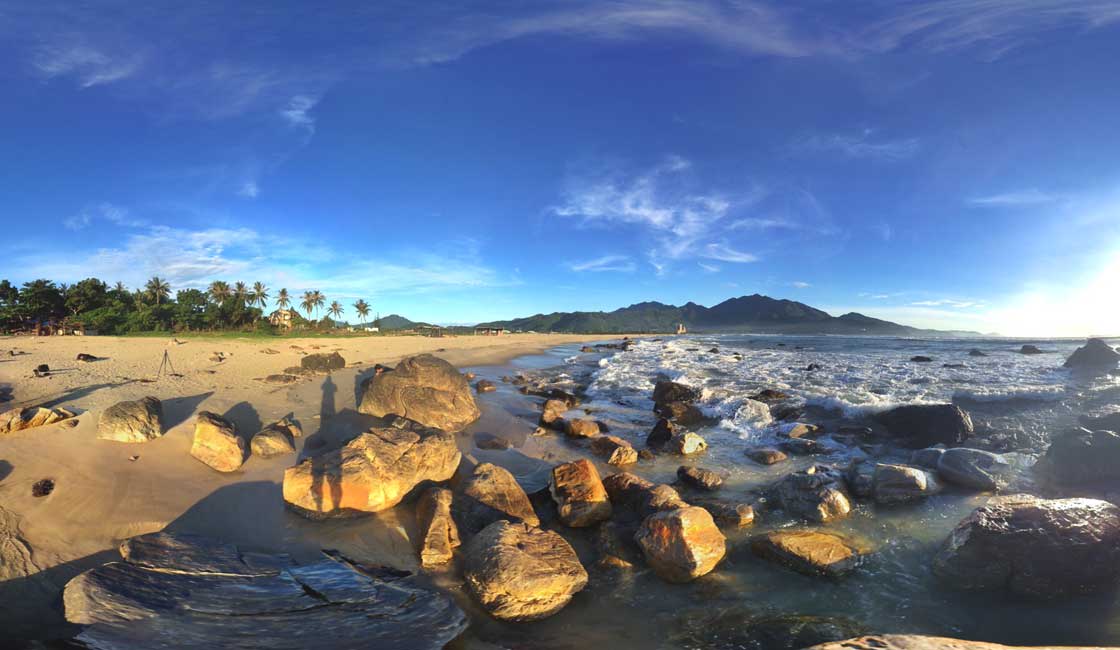
Innocently looking beach with history
Nam Ô Beach is the very place that initiated the United States’ presence and participation in the war. This is where the first American ground troops landed on 8 March 1965. It lies away from the main city beach and its beach bars and restaurants, but close enough to pay it a short visit and ponder on how it all started for the first 3,500 US marines one March morning.
From Nam Ô, just a short ride will take you to a beach with a very different story. Just as back then, My Khe Beach, famous among the American soldiers as “China Beach”, is a beautiful sandy stretch, inviting you to enjoy your time. Today it continues to welcome foreign tourists as well as the locals with great infrastructure and vibes. Those soldiers who were stationed at nearby Da Nang Air Force Base certainly have some stories to tell about this place!
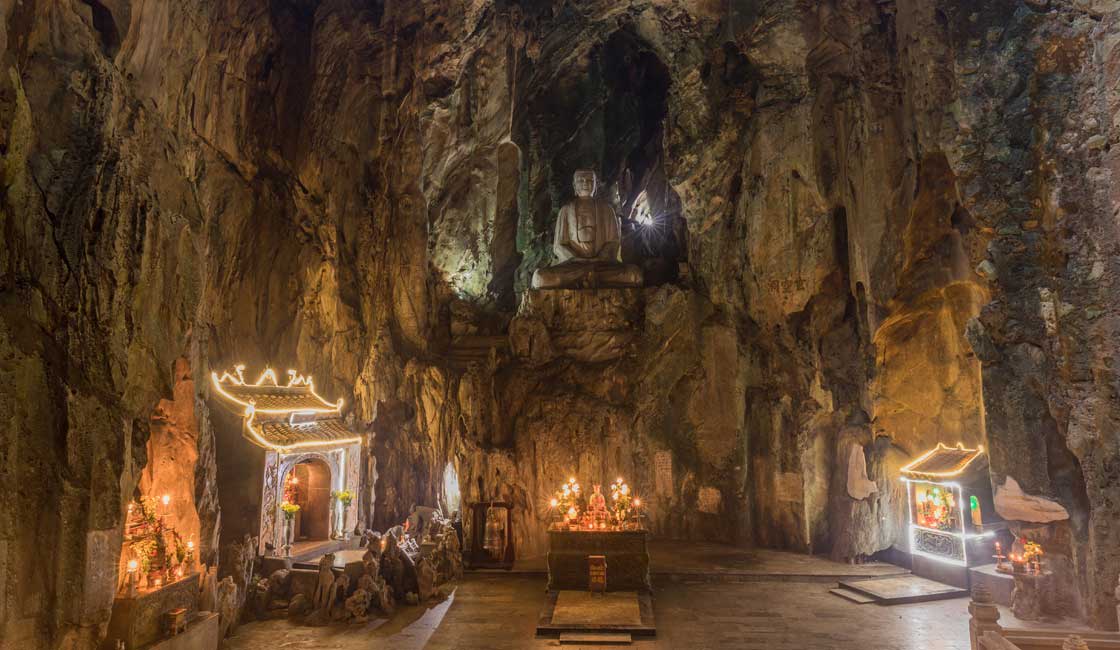
Still a place of worship
The geologically interesting limestone formations are mainly known for their impressive grottos and caves, housing the Buddhist pagodas (17th century), and shrines. But during the war, they served as the Viet Cong guerrillas’ hideaway and a hospital.
What is so remarkable is the proximity of the American Marble Mountain Air Facility, virtually within earshot of the mountains. The MMAF had squadrons based there between 1967 and 1971. Today the new Da Nang – Hoi An highway runs through the terrain of the former base, and only some of the remnants are still visible from the road.
Da Nang Air Base lay 5 miles from the MMAF and was originally a French Air Force Base. The American Air Force was present there in 1962-1972. Today it’s the Da Nang International Airport, one of the busiest airports in the country.
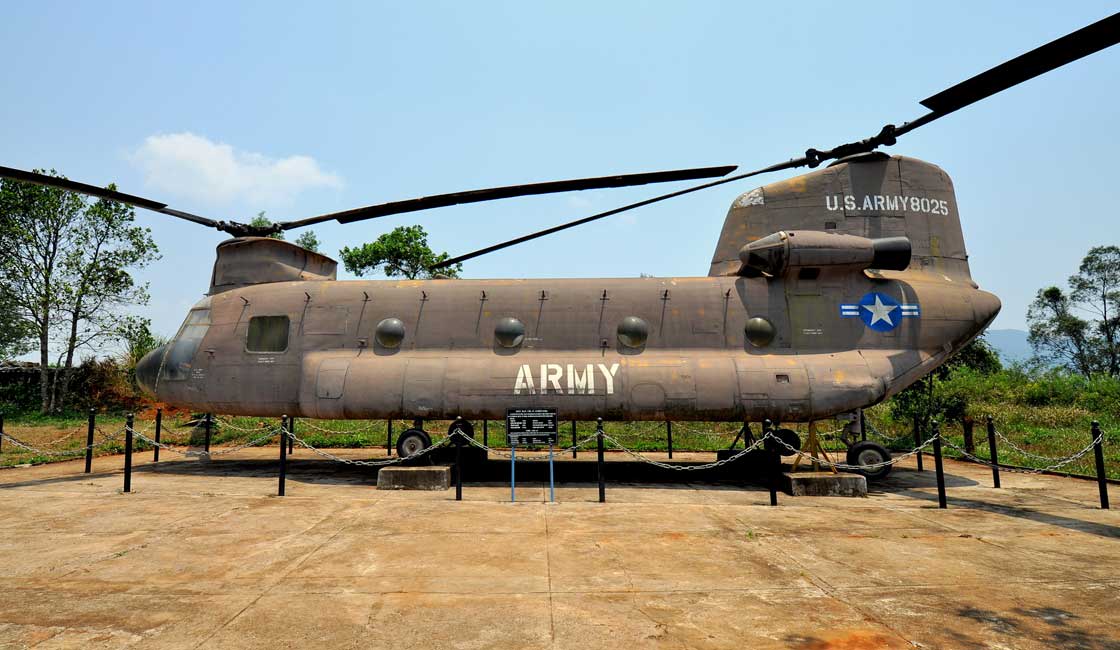
Chinook in Khe Sanh
Deep inland, near the Lao border, lies Khe Sanh, a small mountain town, where the Combat Base was located. It’s there where one of the bloodiest battles of the Vietnam War took place in 1968, lasting 77 days.
Today there is a small museum there, displaying the photographs and a captured aircraft.
There is also a beautiful project being developed by one of Khe Sanh veterans, named The Peace Garden. The American and Vietnamese veterans come together at the former Combat Base, planting the trees together and putting the past behind them.
1.5 hours drive south from Da Nang, in Tam Ky town, more underground tunnels can be found. The Ky Anh Tunnels were opened to tourism quite recently, and are especially interesting as the families who dug them are still present and happy to share their stories.
Another set of tunnels can be found north from Hue – at Vịnh Mốc in the DMZ Zone. These tunnels housed around 300 civilians for many years, keeping them safe from the bombings, 30 meters under the ground.
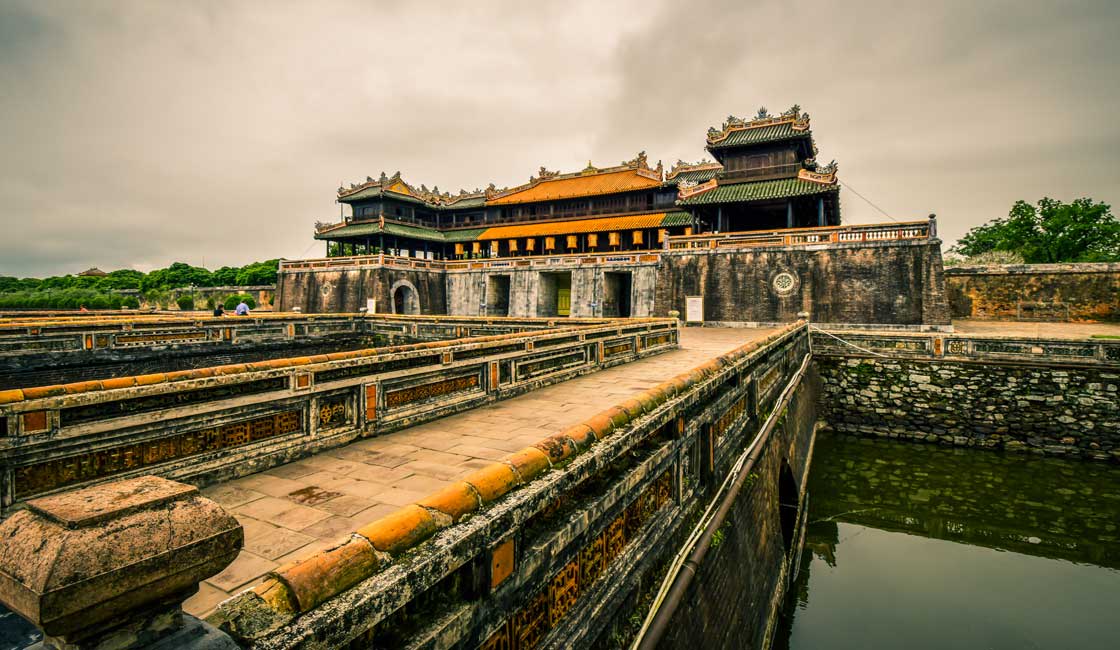
Forbidden city
Hue, as a former capital, is a very important city on the map of Vietnamese tourism in general. But the town and the Citadel that once housed the royal dynasties became a battlefield for over a month in 1968.
As you stroll through the Citadel, you will notice the still visible bullet holes in the ancient walls and you will be able to realize how much of this Vietnamese Forbidden City is missing due to bombings. There is also Huế War Museum on site.
The museum exhibits a vast collection of weaponry captured in this intense period of Vietnamese history. Maybe the most remarkable item on display is the tank that plowed through the gate of Independence Palace in Saigon, bringing the war to an end.
Photos and videos or a diorama of the Battle of Dien Bien Phu give some insight into the war events. Be ready for a certain amount of propaganda.
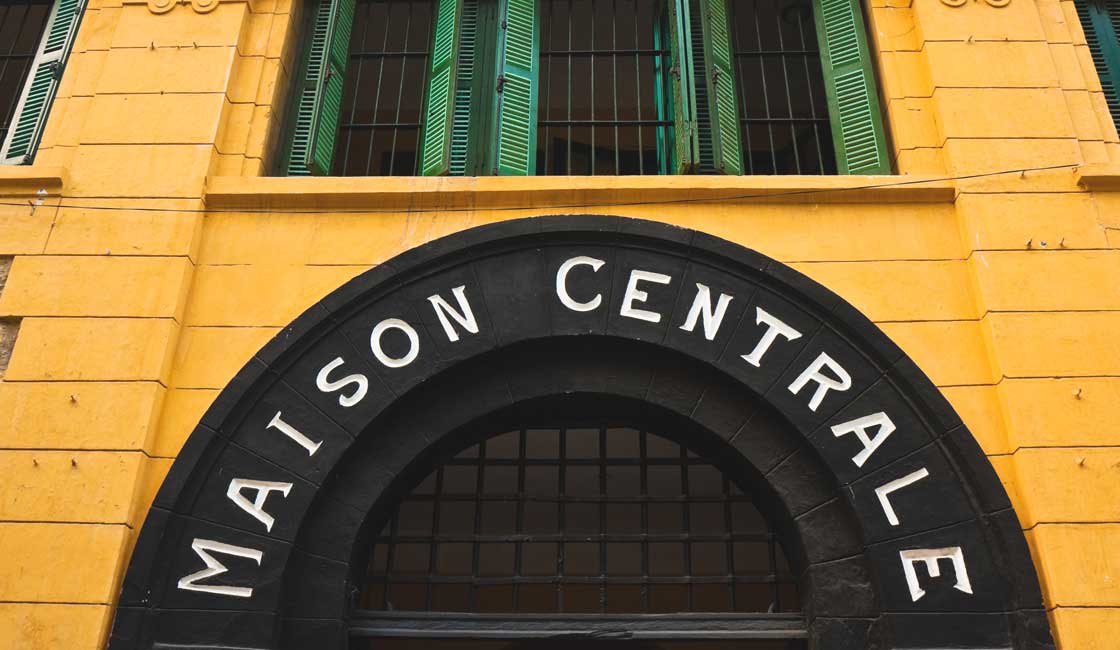
Hanoi Hilton
The Hoa Lo is another prison, originally built by the French and “inherited” by the Americans. The exhibition speaks of both – French and American atrocities. It is propaganda-heavy but is an important site. This is the famous “Hanoi Hilton” where the American Prisoners of War were held. This is where John McCain was held and tortured. The museum is usually on a route of popular tours in Hanoi.
The Museum is 2 miles from the Trúc Bạch Lake, where senator John McCain’s aircraft dropped after being shot down.
It wouldn’t be possible to see all of the war-related sites in Vietnam. The above are the most important or most easily accessible ones, but the list could easily be much longer. Some places, like Son My village, would need special arrangements to visit, others can be done as you are visiting the highlights of Vietnam as your pre or post Mekong Cruise tours.
A great historical overview of the Vietnam War, and photos of this particular event can be found here: http://sites.austincc.edu/caddis/vietnam-wars/.
Our team in SE Asia will be happy to help you arrange any itinerary in the area, even to remote sites or places not mentioned in our tour packages or in our posts. Please, let us know where you’d like to go, and we’ll make it happen.
While Rainforest Cruises aim to provide accurate and up-to-date information, we make no representations as to the accuracy or completeness of any information herein or found by following any link on this site. Rainforest Cruises cannot and will not accept responsibility for any omissions or inaccuracies, or for any consequences arising therefrom, including any losses, injuries, or damages resulting from the display or use of this information.




